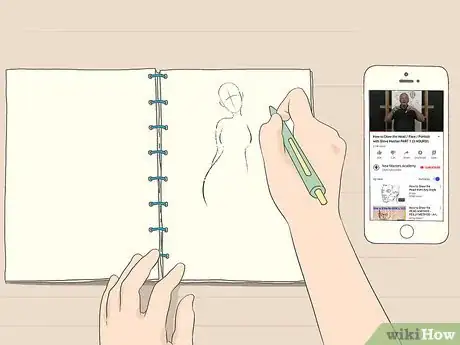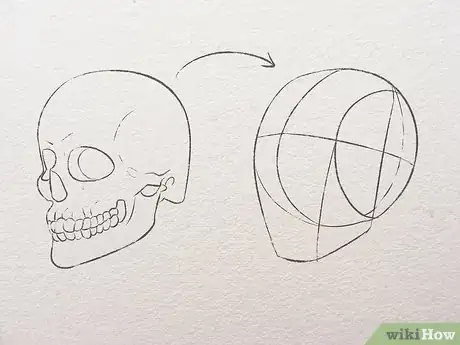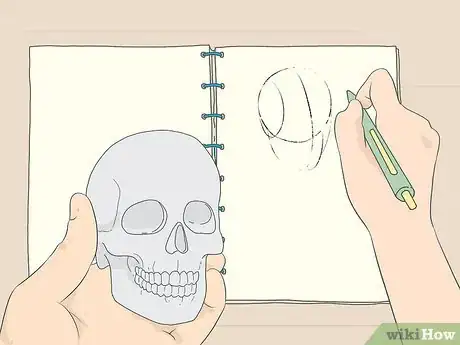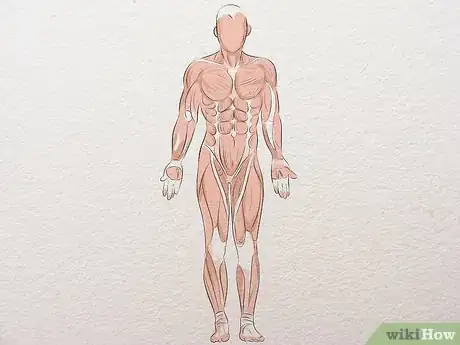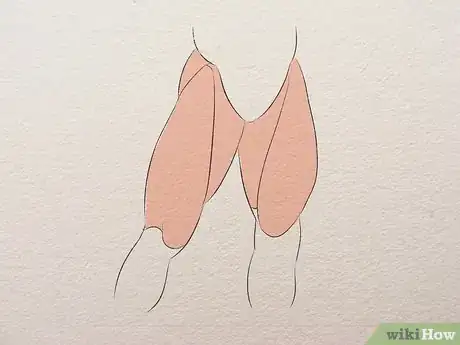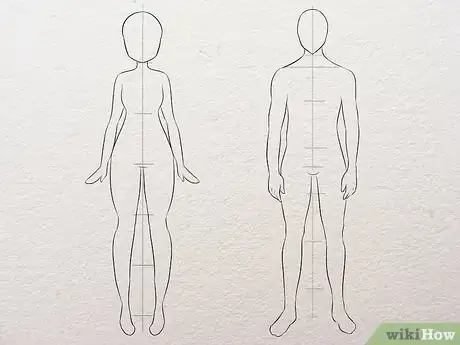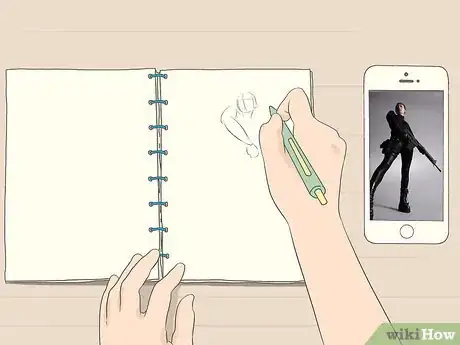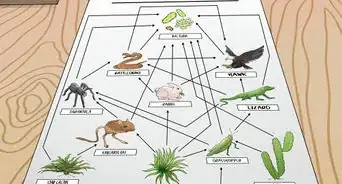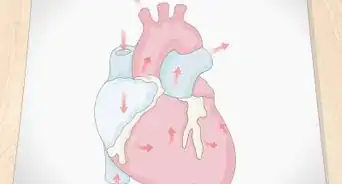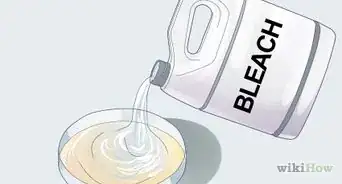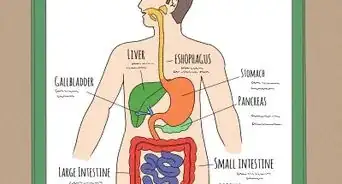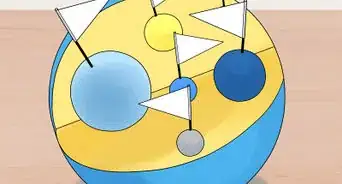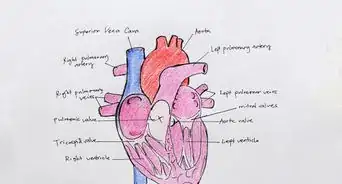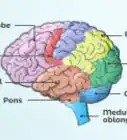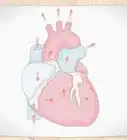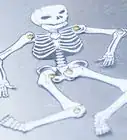This article was co-authored by Renée Plevy. Renée Plevy is an Internationally Acclaimed Portrait Artist from New York/Palm Beach who has painted The Grand Dames of Palm Beach and various celebrities and community leaders. With over 50 years of experience, Renée specializes in painting realistically in oil and capturing the soul of the person. She has studied under internationally renowned portrait artists John Howard Sanden, David Leffel, Robert Beverly Hale, Clyde Smith, and Leonid Gervits. Renée is featured in over 68 shows and galleries including a one-woman museum show at the Paterson Museum. She has garnered numerous awards including “Artist of the Year” from The Bloomfield Art League and First Prize from the Boca Raton Museum Artist’s Guild. Renée has even painted a portrait of celebrity, Vanilla Ice. She also teaches at the Boca Raton Museum Art School - formerly at SVA in Manhattan.
This article has been viewed 92,223 times.
The human body is one of the most complex subjects for artists to illustrate. If you are looking to improve your figure drawing or portraiture skills, you have probably come across suggestions that you master anatomy to improve your illustrations. Fortunately, artists don’t need to weigh themselves down with the details of human organs or tissues. The most important components of anatomy for drawing are the skeletal and muscular systems, the building blocks of the body and its motions. You can master this complex subject by learning the major bone and muscle structures and studying the body in various poses.
Steps
Starting with the Skeleton and Poses
-
1Work with an anatomy book or video series as you practice. One of the best ways to learn anatomy is to read a book or watch videos on the topic, focusing on the parts that are relevant to drawing. If the book is designed for artists, then it will be even more helpful.[1] [2]
- One of the most popular books on the topic is “Artistic Anatomy” by Paul Richer.
- As you read or watch, it’s important to make your own sketches of the different body parts along with the book or instructor.
-
2Study skeletal landmarks where the bone structure is visible on the surface. Some bones are often visible through the skin, and familiarizing yourself with these bones can help you draw them when you’re sketching a figure. They’re also helpful for getting acquainted with the overall shape of the body and can give you a framework for figure drawing. Some of these easily-identifiable spots include:[3]
- The collarbone, which is located where the neck and chest meet.
- The elbows, located where the upper and lower arms meet.
- The spine, which runs down the middle of the back.
- The kneecaps, which are found between the upper and lower legs.
- The ribs, located at the front of the torso below the chest.
Advertisement -
3Focus on the major parts of the skeleton before studying the smaller details. There’s no need to memorize the names and locations of every bone in the body. However, getting a sense of what fits where in the body is the key to successfully learning anatomy and applying it to your art. Learn the shapes of major bones like the skull, femur, and pelvis before stepping back and learning the overall shape of the feet, hands, and other smaller bone structures.[4]
- Once you have a sense of how the skeleton is built, you can practice drawing it on its own in different poses.
-
4Move around a skeleton model to observe how the bones and joints function. In order to see how the joints connect bones, you may want to manipulate a model skeleton into different poses to see how the bones move around as the body changes position.[5]
- Since you will rarely draw a person standing perfectly straight, it’s important to get a sense of how the skeletal system will be shaped in other cases.
Looking Closely at Muscles and Movements
-
1Memorize the major masses of the body. As with the skeleton, there are landmark muscles that form masses visible through the skin. The muscles that contour the torso form the largest of these masses and the thigh muscles wrap around the leg bones. The glutes and the muscles on the arms are also typically pronounced.
- Start learning with the largest of these and move on to smaller ones as you get more confident about the shapes of the large ones.
-
2Study the different muscle groups. Rather than learning the name and location of each individual muscle, focus on major muscle groups. Learning the function of each muscle group and where it’s located will make it easier to draw a realistic human figure. The major muscle groups you should focus on include:[6]
- The quadriceps, which are located at the front of the thighs.
- The hamstrings, which are located on the back of the thighs.
- The calves, which are found on the back of the lower legs.
- The chest muscles, located directly over the chest.
- The back muscles, which stretch across both the upper and lower back.
- The shoulder muscles, which are found on the front, side, and back of the shoulders.
- The triceps, located on the back of the upper arms.
- The biceps, which are found on the front of the upper arms.
- The forearms, which are located on the lower half of the arms.
- The abdominal muscles, which are found over the lower half of the torso.
-
3Learn about the visible tendons alongside the muscle groups. Like bones, muscles have connections between them that dictate how they move. Some tendons in the body are visible above the skin, and it’s helpful to study them so you can recognize them when you’re drawing a figure. Keep in mind that the appearance of the tendons can change depending on how a person is positioned.[7]
- For example, the Achilles tendon, which connects the calf muscles to the heel bone, is visible on the back of the leg.[8]
Applying Anatomy to Drawing
-
1Look closely at the anatomy of figures in your favorite works. In order to see how other artists have applied their knowledge of anatomy, look at the way the body is depicted in your favorite pieces. No matter if you are a comic book artist or an aspiring oil painter, learning the anatomical styles that you want to emulate will give you a goal to strive for.
- It’s important to find a balance between accurate representation and your own drawing style.
-
2Focus on bodily proportions. In contrast to medical anatomy, anatomy in art must pay close attention to the proportions between different body parts. Trace a figure with proportional anatomy from a book and use the measurements of the head, torso, arms, legs, as well as the hands and feet as a guide for how much bigger or smaller one part or another should be.[9]
- Proportions are often measured in terms of “heads.” For instance, the center of the chest is typically the same distance from the bottom of the head as the length of the head itself, a distance called “2 heads,” while the navel is considered to be “3 heads” down.
- Other head-based proportions include the crotch, which is 4 heads down, the knees, which are 2 heads below the crotch, and the feet, which are 2 more heads lower than the knees.
- For arms, some example proportions are the shoulders, which are around 1/4 of a head below the chin, the elbows, which are level with the bellybutton, the wrists, which will line up with the hips, and the fingertips, which fall just above the mid-thigh.
-
3Draw simple forms to establish shape and dimension, then add the details. Every human body is different, but they all share some common simple forms, like spheres, cylinders, and ovals, that you can use to create a basic outline for your drawing. Don’t try to draw exactly what you see at first or your drawing could look stiff and inorganic. Instead, start with the basic shapes and gestures you see, then fill in the details around them.[10]
- For example, you might start with cylinders for the thighs and lower legs, spheres for the knee caps, and a square for the upper torso. Drawing these simple forms first will make it easier to capture the figure’s movement and overall shape.
-
4Sketch in layers, starting with the skeleton before moving to the muscles and skin. Start by drawing figures as skeletons, and then add the musculature to the sketch. Once you have added muscles, draw the skin on top and reduce the muscular and skeletal detail to see how the anatomy looks as a standard figure drawing.[11]
- Be sure to start with the skeletal and mass landmarks you learned and try different poses to get a sense for where they will be in those positions.
- Try drawing people of different shapes and sizes to see how the anatomy changes, especially the muscle and skin layers.
- Artists beginning to use anatomy as a guide for their figures often start by drawing the body in anatomical layers. As you improve, start to abstract the skeleton and muscles into chunks so that you can draw the layers much more quickly.
-
5Practice drawing from pictures, sculptures, dummies, and live models. The more types of figures you draw from, the more familiar you’ll get with human anatomy.[12] Sketching figures from photographs is a great place to start, but don’t stop there. Use human dummies or mannequins to practice drawing from three-dimensional figures. You can also take an art class so you can practice drawing from live models.[13]
Community Q&A
-
QuestionCan a child learn anatomy?
 Nightincry 078Community AnswerYes, anyone can learn how to draw. You just have to practice a lot. It's good to start off young, but even then, anyone could learn anything at any age.
Nightincry 078Community AnswerYes, anyone can learn how to draw. You just have to practice a lot. It's good to start off young, but even then, anyone could learn anything at any age. -
QuestionI try so hard but I can never get it. Should I quit?
 Cros SaintCommunity AnswerTry to draw with a reference, this helps a lot. Just because you never get it doesn’t mean you should quit, a person gets better every time they try something, so this means that even though it still may look poor, each one is technically better than the last. The fact that you can see that the anatomy is off means that your visual library is sufficient to draw decent looking characters, it’s just the execution that is difficult. Also, try imitating another person’s anatomy drawing, this will often help.
Cros SaintCommunity AnswerTry to draw with a reference, this helps a lot. Just because you never get it doesn’t mean you should quit, a person gets better every time they try something, so this means that even though it still may look poor, each one is technically better than the last. The fact that you can see that the anatomy is off means that your visual library is sufficient to draw decent looking characters, it’s just the execution that is difficult. Also, try imitating another person’s anatomy drawing, this will often help. -
QuestionHow much time does it take to completely learn anatomy?
 LemonstersCommunity AnswerIt depends on certain individuals and cases. Some people take up to 3 years to master anatomy completely. It depends on your specific case and how long you've studied for. A student who studies 12 hours a week generally learns faster than those that only spend 4 hours, but it depends how efficiently and easily you've been able to grasp the information learnt.
LemonstersCommunity AnswerIt depends on certain individuals and cases. Some people take up to 3 years to master anatomy completely. It depends on your specific case and how long you've studied for. A student who studies 12 hours a week generally learns faster than those that only spend 4 hours, but it depends how efficiently and easily you've been able to grasp the information learnt.
References
- ↑ Renée Plevy. Portrait Artist & Educator. Expert Interview. 7 May 2021.
- ↑ https://claralieu.wordpress.com/2013/08/25/ask-the-art-professor-how-would-i-go-about-studying-the-human-body/
- ↑ https://www.creativebloq.com/how-to/draw-accurate-bones-and-muscle
- ↑ https://www.creativebloq.com/how-to/draw-accurate-bones-and-muscle
- ↑ https://claralieu.wordpress.com/2013/08/25/ask-the-art-professor-how-would-i-go-about-studying-the-human-body/
- ↑ https://www.weight-lifting-complete.com/major-muscle-groups/#chest
- ↑ https://www.creativebloq.com/how-to/draw-accurate-bones-and-muscle
- ↑ https://www.mayoclinic.org/diseases-conditions/achilles-tendinitis/symptoms-causes/syc-20369020
- ↑ https://www.creativebloq.com/how-to/draw-accurate-bones-and-muscle
- ↑ https://www.creativebloq.com/advice/best-practice-advice-for-capturing-human-anatomy
- ↑ https://claralieu.wordpress.com/2013/08/25/ask-the-art-professor-how-would-i-go-about-studying-the-human-body/
- ↑ Renée Plevy. Portrait Artist & Educator. Expert Interview. 7 May 2021.
- ↑ https://claralieu.wordpress.com/2013/08/25/ask-the-art-professor-how-would-i-go-about-studying-the-human-body/
